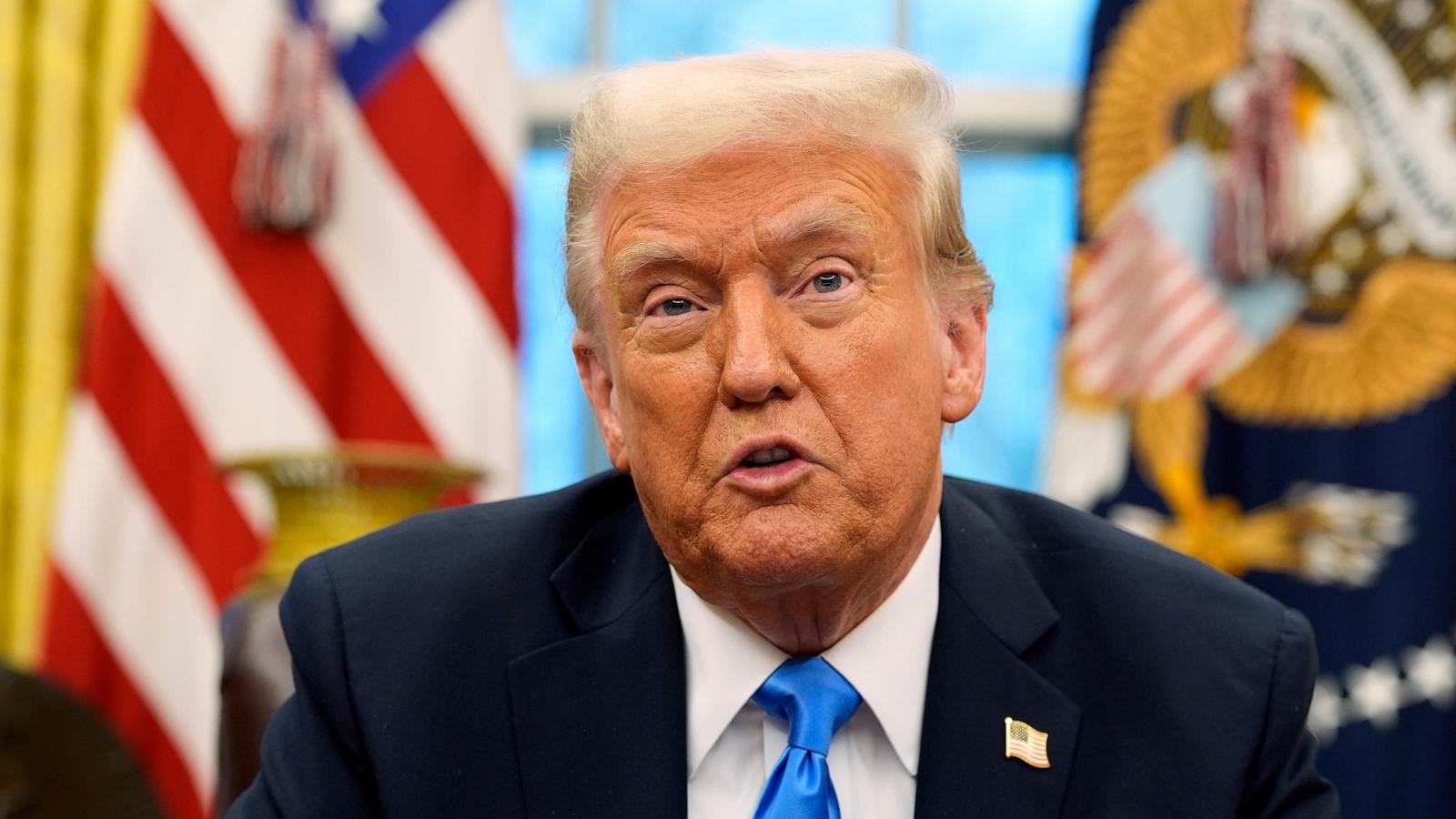Heather Stambaugh, a high school teacher in rural Ohio, said she sees the impact of federal funding every day in her classrooms.
It opens up opportunities for individual aides to work one-on-one with high-need students, she said, or to lead small group learning sessions that help students achieve “light bulb” moments they may not have otherwise.
“At the end of the day, this is the next generation of doctors and lawyers, business executives,” Stambaugh told ABC News. “But they’re not going to have as many opportunities if we don’t have enough staff and we don’t have the tools.”
Federal funds from the Department of Education support programs, resources and sometimes even staffing to address educational barriers faced by low-income, low-performing, disabled and rural students, among others.
If the department is dismantled, as President Donald Trump and some Republican lawmakers have said they hope to do, public school K-12 educators fear these programs could be diminished.
“The first people that are going to feel that are second- and third-graders who are getting specific reading interventions that will help them be closer to grade level. I have high schoolers who are reading well below a ninth-grade level, and that would only get worse,” Stambaugh said. “And then to wonder to yourself will this child be able to read a medical document to sign? Will this child be able to conduct just the general business of life? Because at the bare minimum, that’s what schools are offering.”

Detroit high school teacher Rodney Fresh said he’s seen students that might have been considered “a throwaway child by society … become a productive member of society when they graduate” because of the Michigan school’s career and technical programs, which get federal funding.
“I’ve seen students where traditional schooling hasn’t necessarily been beneficial, but we get them in supportive career tech programs that are supported by federal finances, and they excel. They find their niche,” Fresh told ABC News.
Established in 1980 by Congress, the department is intended to collect data and research on schooling and education, direct supportive funds to targeted communities, and investigate and enforce civil rights anti-discrimination law. It’s the smallest Cabinet-level department, with less than 5,000 employees.
The department does not dictate or implement policy on school curriculum.
President Trump said he wants to eliminate the department and “send all education work and needs back to the States,” according to Trump’s Agenda47 campaign.

Trump’s team hasn’t clarified what it would mean to give the power back to the states, though he has cited the use of “block grants” by the federal government as a way to further expand school voucher programs.
In the ongoing efforts to dismantle the Department of Education, lawmakers have recommended redirecting program enforcement and funds to other federal departments.
“The federal Department of Education has never educated a single student, and it’s long past time to end this bureaucratic Department that causes more harm than good,” U.S. Senator Mike Rounds said when introducing legislation to dismantle the department.
A statement from his office continued, stating: “Despite its inefficiencies, there are several important programs housed within the Department. Rounds’ legislation would redirect these to Departments of Interior, Treasury, Health and Human Services, Labor and State.”

ABC News has reached out to the White House and the Department of Education for comment.
“Many of the concerns that people have with education and the direction of education this country, whether it be curriculum, instruction or even instructional materials, are not handled by the Department of Education,” Rep. Jahana Hayes, a Democrat on the House Subcommittee on Early Childhood, Elementary, and Secondary Education, said in an interview with ABC News.
“Those are already local decisions that are handled by local boards of education, state boards of education. So all of that is handled locally.”
Federal funding makes up 11% of school revenue nationwide, according to the National Center for Education Statistics.
However, the weight this funding carries is heavier for some states than others; federal dollars make up roughly 20% of South Dakota school revenue and 19% of revenue in Mississippi and Montana. These are the biggest recipients of federal dollars in the country, the NCES noted.
States like New York, New Jersey and Connecticut are among the smallest recipients, with federal dollars making up just 5% of school revenue.
Among the grants and funds delivered by the department are Title I funding and Individuals with Disabilities Education Act (IDEA) funding. These federal financial assistance programs are geared towards communities facing high levels of poverty or disabled populations. They can support services like additional reading and mathematics instruction and staffing, speech or behavioral therapy, after-school and summer programs.
Across Ohio, the state’s Coalition for the Education of Children with Disabilities reports that almost 16% of students have a disability of some kind.
Stambaugh said she sees the role that federal funding plays for the disabled students in her classrooms each day. She noted the money subsidizes the salaries or pay for tutors, individual aids for highly disabled children and intervention specialists aimed at helping struggling readers and performers.

Getting rid of federal funding, Stambaugh argued, “gives our highest vulnerability students less one-on-one attention, less individualized education, and it puts them at greater risk to be even further behind the peers that they’re already testing behind.”
In Detroit, where about 84% of kids are eligible for free and/or reduced-price lunch, schools have become more than a place for students to learn.
For those who come to school hungry, need a place to wash and dry their clothes, or need additional help with literacy and math after class, federal funding helps schools run additional services for students in need, according to Fresh.
“For some students, I become a counselor, a social worker, a big brother, a dad, and so I don’t think you ever really get to just turn off from being a teacher,” said Fresh. “I think it’s a 24/7 job.”
Title I and IDEA were established through Congress, just as the Department of Education was, and it would take Congress to lead their undoing, some lawmakers told ABC News.
Hayes told ABC News that she expects Trump and billionaire businessman and Trump confidant Elon Musk to “strangle the funding” of the department if it can’t be dismantled.
“What we’re seeing through some of the actions with other organizations is that we are dealing with an administration that is not following the rules as they’ve been established,” Hayes said. “The Department of Education was set up by an act of Congress, and can only be dismantled by an act of Congress.”
Trump’s Department of Government Efficiency (DOGE) has already made sizable cuts to the Education Department – slashing 89 independent research contracts at the department’s Institute of Education Sciences worth nearly $900 million, according to DOGE’s post on X and confirmed by a department spokesperson on Feb. 11.
But with the thin Republican majority in the House and Senate, it’s unclear just how likely it would be for Congress to dismantle the department completely.
Utah Republican Rep. Burgess Owens told ABC News it’ll be a congressional numbers game to take down the Education Department, but noted that he has to “see if executive order can really do that or not.”
“All the things will be tested,” he said.
Owens, who supports dismantling the department, said that issuing block grants to states could serve as a replacement for the department’s programs, adding that there would have to be some state accountability for funds.
“If this is not working, let’s be innovative. Let’s be creative, and we figure out something else,” he said.
ABC News: Top Stories
Read the full article .


